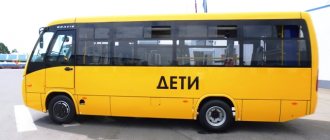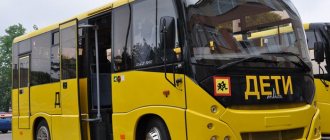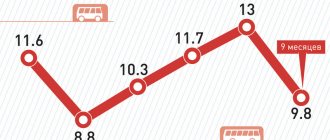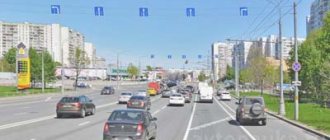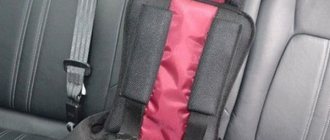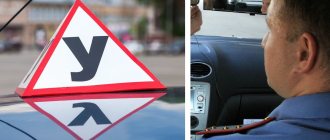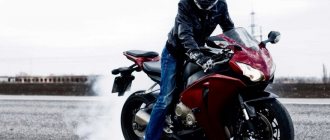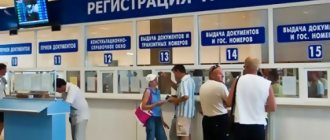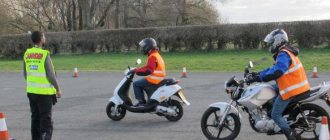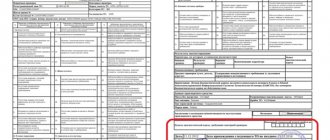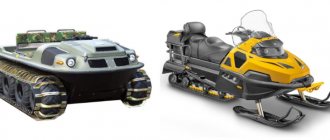The irresponsible attitude towards the Traffic Rules (hereinafter referred to as the Rules, SDA) of persons driving mopeds has become a real problem for the public, all participants in the road sector, as well as for the State Traffic Inspectorate service.
Dear readers! The article talks about typical ways to resolve legal issues, but each case is individual. If you want to find out how to solve your particular problem , contact a consultant:
+7 (499) 938-81-90 (Moscow)
+7 (812) 467-32-77 (Saint Petersburg)
8 (800) 301-79-36 (Regions)
APPLICATIONS AND CALLS ARE ACCEPTED 24/7 and 7 days a week.
It's fast and FREE !
Often, drivers of these types of vehicles (hereinafter referred to as vehicles) do not even bother to remember the signs and laws regarding driving a small vehicle.
There are separate paragraphs of the Rules specifically provided for such participants in road traffic in Russia.
Permitted age for driving
The Russian Traffic Regulations do not specify a minimum age for moped drivers. But it is worth considering that you must obtain a license for this transport.
IMPORTANT! For mopeds and scooters, you need to get a category “M” driver’s license, which is issued only to citizens at least 16 years of age. Therefore, only persons over sixteen years of age can drive a moped.
Many parents buy mopeds for their children aged 10-15 years. This is not only an unwise act, but also illegal, given that the child will be driving the scooter independently. If a child driving a moped is stopped by traffic police, the parents will have to pay a considerable fine.
How to transport children on a motorcycle in Russia and the EU? Rules and correct advice from experts
From the article you will learn how to transport children
on
a motorcycle
(moped) in Russia and EU countries (European Union).
In addition, we will find out whether it is worth buying a child seat
, what
rules
and
correct advice
from experts should be followed in the process of transporting a child on a bike.
We recommend that you read the article: “ Safe ways to corner on a motorcycle
" {banner_adsensetext} When deciding to transport a child on a motorcycle, we must be aware of the responsibility that in this case falls on us, because a motorcycle is not a car. In addition, the highest level of responsibility arises not only from the content of traffic laws, but also from the point of view of safety considerations. As for the legal norms that require parents and guardians to be guarantors of the child’s safety, the basic concepts, fines and liability are reflected in Article 12.31.1 of the Code of Administrative Offenses of the Russian Federation - “Responsibility for the transportation of passengers and cargo by road” and Article 159 of the Criminal Code of the Russian Federation - “Leaving children in danger.”
BASIC RULES FOR TRANSPORTING CHILDREN ON A MOTORCYCLE
(
MOPETED
)
What does the provisions of the Road Traffic Law say about transporting children on a motorcycle?
The only provision regarding the transportation of a child on a motorcycle is contained in the law on traffic rules, which can only be found in Article 20, paragraph 4 and Article 22, paragraph 2 - “Rules for the transportation of passengers.”
These articles state that the movement of a motorcycle (also with a trailer), ATV and moped with a child as a passenger under the age of 7 years must be carried out at a speed of up to 40 km/h. You should also remember the obligation that follows from Article 40 of the traffic rules of the Russian Federation, which prescribes the mandatory use of a certified protective motorcycle helmet
and equipment, both by the driver and the passenger (in our case, the child).
How is the transport of children on a motorcycle
(
moped
)
in European countries?
It is worth remembering an important point, which concerns the fact that the rules governing the transportation and minimum age of a child on a motorcycle in certain eurozone countries can vary dramatically. In addition, traffic rules are supplemented and radically changed every year. For example, in Austria, Croatia, Montenegro, the Czech Republic and Slovenia it is allowed to transport children over 12 years old on a motorcycle, but in Macedonia this is allowed only from 18 years old. For reference, we note that the fine for violating the rules can range from 100 to 300 euros (for example in Russia: from 500 to 5,000 rubles).
Also in the European Union there are rules regarding the need to use a special child seat or the ability to rest your feet on special footrests. So, for example, in Belgium, a child seat is provided for children aged 3 to 8 years, in France, a child seat is provided for children under the age of 5 years, and in Germany, a child seat is provided for children under the age of 7 years. Special footrests installed on a motorcycle and intended for the feet of a child are prescribed in the rules of Austria, France and the UK (for reference: a child in these countries is considered to be children under 16 years of age). As we can see, in the eurozone, the issue of the age of the child as a passenger on a motorcycle is of decisive importance.
Is it possible to transport a child on a motorcycle
(
moped
)
in front of the driver?
Riding a motorcycle or moped (scooter) with a child in front is strictly prohibited. Although, at first glance, such a decision may seem quite reasonable, it is impossible to transport a child in this way - it is completely unsafe. The rules clearly state that this place is strictly for the driver of a two-wheeled vehicle.
{banner_reczagyand}
Is it worth buying a child seat
(
seat
)
for a motorcycle?
According to experts, maximum protection and safety for children, especially younger ones, when transported on a motorcycle (moped), can only be provided by appropriate seats that are installed on the seats of the bike. This accessory is a must-have for your bike, especially if you often ride your child on a motorcycle. Of course, the best solution would still be to install an additional closed stroller.
What else do you need to know about safely transporting a child on a motorcycle?
When transporting children on a motorcycle or moped, you must remember that regardless of the chosen method of transporting a child, before the start of the trip it is recommended to provide instructions for young passengers, and in a language that is extremely understandable to them. Before the trip, you need to briefly tell your child about the structure of the motorcycle; that when cornering the bike can lean heavily; it is necessary to strictly prohibit removing your feet from special footrests, letting go of your hands or removing your helmet while driving, and it is also advisable to develop your own conventional signs that will help not distract the manager from the road (for example, if a child wants to ask to stop, then he will only need to show a certain gesture or sign). We also note that to create additional convenience when transporting children, it is recommended to equip motorcycle helmets with a wireless communication system.
In addition, transporting children on a motorcycle requires that the motorcycle be properly prepared and that the passenger be equipped with appropriate protective clothing (helmet, gloves, overalls and boots). The equipment of a small passenger should not only be safe (protect from possible damage), but also extremely comfortable. Remember that children are quite susceptible to overheating or hypothermia. For reference, we note that compliance with traffic rules is only half the battle; common sense and awareness of responsibility when transporting children are sometimes much more important.
In conclusion, we note that transporting children on two-wheeled vehicles is an exclusively personal decision of parents who are ready to take full responsibility for the health and life of the little passenger. It is always worth remembering the important point that every motorcyclist (biker), before placing a passenger on the seat of his motorcycle, is simply obliged to concentrate and prepare for the trip (learn or repeat the rules of the road and instruct his passenger).
THANK YOU FOR YOUR ATTENTION
.
SUBSCRIBE TO OUR NEWS
.
SHARE WITH YOUR FRIENDS
.
What are the main restrictions for drivers?
A moped and a motorcycle are different vehicles, despite the same number of wheels. The category of mopeds includes:
- M - engine capacity no more than 50 cubic meters. cm.;
- A1 - engine capacity no more than 125 cubic meters. cm.
The category indicated on the driver's license must correspond to the engine power of the vehicle. The maximum speed of a moped should not exceed 50 km/h, otherwise it can be classified as a motorcycle.
If we briefly talk about the requirements for the vehicle and its driver, then it is worth highlighting the following points:
- You can drive a moped from the age of 16 and only if you have a license with the appropriate category.
- The maximum speed of a moped, declared in the PTS, should be no more than 50 km/h. If an ATV has similar characteristics, then it is equated to mopeds.
- You can carry passengers on a moped only if there are special places designated for this.
- The vehicle must be equipped with headlights and turn signals. According to clause 19.5 of the traffic rules, all vehicles must have running lights or low beam headlights on during the daytime. At night it is forbidden to move without headlights.
- If the vehicle's maximum speed is 40 km/h or less, entry on the highway is prohibited.
- The driver and passengers must wear a fastened helmet.
- A moped cannot be towed (under any circumstances). This transport is only allowed to be transported with partial or full loading on a transport vehicle. Only motor vehicles with a side trailer (sidecar) can be towed.
- It is prohibited to transport large items on a scooter. The load must not interfere with vehicle control, block the view, or exceed the norm of 0.5 m in length or width of the motor vehicle.
- It is prohibited to make a U-turn across tram tracks or make a left turn on the roadway (route).
- You cannot cross the path of pedestrians while moving along a zebra crossing.
- Drivers are required to hold the steering wheel with at least one hand while driving. Driving without hands is prohibited.
REFERENCE: If the category ML is indicated in the “special notes” column on the driver’s license, then the person will not be able to drive a moped, since this designation implies that the driver has health problems that prevent driving.
Definition
A scooter and a moped are slightly different two-wheeled vehicles, but very similar in some ways. This is why these words are sometimes used as synonyms.
If all formalities are followed, it turns out that the term “scooter” does not appear in Russian legislation at all. It rather refers to the spoken language of the Russian-speaking population, using foreign borrowings.
In any case, all questions regarding how the drivers of these cars should behave on the roads are prescribed in the Rules. This means that all points relating to a moped also apply to scooters and their operation.
Regarding the question of whether a moped is a vehicle according to traffic regulations, it should be noted that yes, it is. And if so, then what category of vehicles do scooters and mopeds fall into?
Using justification to prove the existence of a category for a given type of transport - Art. 25 of the Russian legislative act “On Road Safety”, the category of mopeds is:
| M | engine volume not exceeding 50 cubic meters. cm |
| A1 | engine capacity no more than 125 cc. cm |
In the terminology of traffic regulations, a moped is a two-wheeled vehicle, recognized as mechanical, capable of reaching speeds of no higher than 50 km/h, and having an engine with a displacement of no more than 50 cubic meters. cm.
If the vehicle exceeds one or another of the parameters listed here, then it is a motorcycle, not a moped.
Mopeds can be equipped according to the production design (delivered from the factory) with an electric motor. Then its rated power should not exceed the longest load - more than 0.25 kW, and be less than 4 kW.
If ATVs have parameters similar to those of mopeds, then they are also equated to category M or A1.
Where can you drive a vehicle?
The basic rule for driving on the roadway is that drivers of mopeds and scooters must move on the far right side of the lane in a single file. Thus, you can ride a moped on the same roads as a car. Besides:
- Riding a moped on the side of the road is allowed if this does not interfere with pedestrians;
- Single-file traffic is allowed in the lane for cyclists (marked with special markings).
If there are several mopeds on the lane, then they must move one after another.
Where should vehicles be located on the roadway?
You can ride a scooter on the roadway, but only in the outermost row of the right lane. In populated areas it is also permissible to occupy the left lane. Motorcycles without a side trailer can travel in a row, occupying the right edge of the roadway.
If there is a lane for cyclists next to the roadway, then you need to move along it.
According to paragraph 24.4 of the traffic rules, a moped driver must give way to all vehicles if he is in a situation where he is moving on a bicycle path that intersects with an uncontrolled intersection.
Is it possible to transport children
Places for transporting passengers must be indicated in the registration certificate. If the availability of special seats is not documented, then passengers cannot be carried.
If there is no special seat for children (child seat) that meets the safety requirements for transporting children under 7 years of age, then they cannot be transported. Children over seven years old can be transported if there is a passenger seat provided for by the design of the vehicle. It is important to remember that all passengers, regardless of age, must have a helmet that is adjusted to fit.
IMPORTANT! You can carry children on a moped only if you have category M or A1, which is valid for at least two years (that is, the mopedist already has driving experience).
Stipulated fines for violations
Like all road users, mopedists are fined for violating the rules.
| Did not find an answer to your question? Call a lawyer! Moscow: +7 (499) 110-89-42 St. Petersburg: +7 (812) 385-56-34 Russia: +7 (499) 755-96-84 |
- for driving a moped without a license: a fine of 500 rubles if the driver simply forgot to take a license, but has category M; from 5 to 15 thousand rubles for those who do not have rights or are expired; 30 thousand for those who were deprived of a license;
- driving on someone else's license is falsification of documents and for this you can be arrested for up to 6 months, or assigned correctional labor;
- for the absence of an MTPL insurance policy or registration - 800 rubles;
- driving while intoxicated entails a fine of 30 thousand, as well as deprivation of a driver’s license for a period of 1.5 to 2 years;
- for the absence of a helmet (or if it is not fastened, including for the passenger) - a fine of 1000 rubles. A helmet on a moped is like a seat belt on a car;
- for exceeding the speed limit, violating maneuvering rules, etc. Moped drivers face the same fines as motorists.
A moped is a full-fledged vehicle, albeit with some operational features. Mopedists have both privileges (for example, in the form of permitted movement on the sidewalk) and restrictions. You should take scooter driving seriously and follow all traffic rules.
Basic documents that a driver should always have with him
There is a list of required documents for each moped driver. They are needed for various situations. The main ones include the following:
- The first and most important thing is a driver’s license of the appropriate category or subcategory. Without it, it is completely prohibited to start driving this vehicle. Also, the driver is obliged to provide it to the police for inspection if necessary.
- The Law of the Russian Federation “On Road Traffic Safety” states that the following categories and corresponding subcategories have been established, which give the right to drive these vehicles:
- to drive light quadricycles or mopeds you need category “M”;
- for driving motorcycles whose internal combustion engine capacity does not exceed 125 cubic meters. see and limiting maximum power up to 11 kilowatts - subcategory “A1”.
Also, in rare cases, the necessary documents may include a rental agreement for your vehicle, a registration certificate (registration of mopeds up to 50 cm3).
